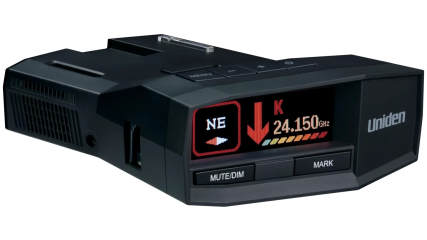Can you transfer demerit points to someone else?
By David Morley · 03 Dec 2024
Can you transfer demerit points to someone else?The good news is, in some cases, yes you can, and it’s perfectly legal. Of course, there’s a catch or two.Meantime, the letter in the mailbox looks ominous. Its clearly not a Christmas or birthday card. You open it to discover it’s a traffic infringement notice. And it’s a double whammy.Like many driving fines, you’ve been slugged $300 and had three demerit points added to your license. Or have you? Can demerit points be transferred?This article is not a handbook on how to contest a speeding fine. But the number of people who carry out internet searches along the lines of 'nominate infringement notice' suggests being able to pass on undeserved fines and demerit points is an issue for a lot of drivers.And the news is good, because, in some cases, you can have that fine and those points legally transferred to somebody else’s license.The kicker is that the person who will ultimately take the fine and points must be the person who actually committed the offence listed in the notice.In that sense, you’re not transferring fines and demerit points, because you should never have been liable for them in the first place.However, thanks to the way some Australian road laws are written (to allow for camera-detection, mainly) this mechanism has become essential to protect the innocent from the law. Which sounds appalling, and is.This is all about the shortcomings of speed and red-light camera law enforcement. And it recognises the fact that while the camera is perfectly capable of identifying the vehicle in the photo, it has pretty much no idea what human was actually driving it at the time. In a typical family with teenagers, for instance, there could be four or five or even more regular drivers of the same vehicle.But what if you can’t accurately name the driver at fault? That gets a bit messier and it can vary slightly between states and territories.One example is if you sold the car and the new owner hadn’t transferred it into their name before the offence was committed (which is why the infringement notice came to your address and not theirs).In that case you can apply to have the fine and points struck from your licence. Being able to identify that person will make the process much simpler and easier.That’s why you should always take a photo of the license of anybody you don’t know personally who buys or borrows your car.Perhaps the car in the photograph was not yours at all, but a car with stolen or fake number plates fitted that match your car’s number plate.Sometimes, the states trip over themselves and send a fine to a car with a matching number plate that is actually registered legally to that number, but from another state. Again, you can apply to have the offence torn up as far as you’re concerned.Perhaps you’ve been the victim of somebody else who has incorrectly transferred a fine into your name, even though you’re not the guilty party.Again, there’s a legal process for putting this right. There are also cases where, for example, a company car with no log-book that could have dozens of different drivers, gets detected by a camera.If the identity of the driver truly can’t be verified, then the points and fine are usually commuted to a massive fine for the company that owns it as well as, in some cases, a registration suspension of several months.Again, there are variables from state to state and, in Victoria, for instance, none of the above applies if the vehicle was unregistered at the time of the alleged offence. The owner is liable and that’s about it, unless the car was stolen at the time.Also, this ability to nominate another driver applies only to certain offences. And you can only nominate someone else for fine costs and demerit points in the case of a camera-based detection situation.For instance, an on-the-spot traffic fine where you’re stopped by police and booked the old fashioned way, doesn’t need this nomination option because the officer will already have established the driver’s identity.For this reason, drink or drug-driving offences can’t be palmed off to another driver, either.You also need to make sure you tackle the problem as quickly as possible. Depending on the state, you will have probably 21 or 28 days to make your application to have the fine and points transferred. Leave it longer than this and you’re possibly stuck with them regardless of whether you were driving the car at the time or not.So how do you go about the process of having the points and fines transferred? What happens when you nominate another driver?In most states, you can apply online to have your case considered. This is where the three to four-week time limit applies, so it needs to be tackled promptly.Once lodged, the matter will be given due consideration and a ruling will be made. If successful, the fine and demerit points will be applied to the nominated driver’s licence.In some cases, the nominated driver will be told who nominated them, but in cases of family violence or other dangers, an internal review might hide this information from the other driver.But can you give, rather than transfer, fine points to someone else? As in, what if a family member agrees to take the hit for you. This is often talked about, but is an offence and carries penalties of its own if you’re caught.In Victoria, for instance, should you falsely nominate a driver to take the points and speeding fine, you could be fined up to $10,000 and have your licence suspended. The fine is even bigger for corporations taking the same approach.And what about those on their L-plates who need a licensed driver beside them to be legally at the wheel? If a learner driver speeds who is responsible for the fines and points?This is a pretty simple one: While the person in the passenger seat must be currently licensed and not affected by drugs or alcohol, the law states that it’s the driver (the L-plater) who ultimately takes responsibility for their actions.Even in WA where there are no engine restrictions, no towing or passenger restrictions and no speed restrictions for learner drivers, there’s a maximum of four demerit points that can be accrued before the learner’s permit is suspended, so it’s a lot easier to earn a suspension as a learner (or a P-plate) driver.The best piece of advice is to not panic when the letter turns up in the mail. Provided you’re not a repeat offender, a modest speeding offence should only add one, two or maybe three demerit points to your licence.And in three years, you’re back to square one, because that’s the answer to the question of how long does it take to get your demerit points back. Although, in reality, you gain demerit points for infringements, not lose them, but the end result is exactly the same.Again, though, there are subtleties and, in NSW, even though the points will disappear from your licence after three years, they’ll stay on your permanent driving record forever.Most states have an online page with a section called 'check my demerit points' or similar. By entering your details, the page will tell you how many points you have accrued. What this page won’t do, however, is give you a tip off that you’ve been caught doing something wrong, because points don’t appear on your record until the fine has been paid and the matter finalised.






.jpg)
.jpg)

.jpg)

.jpg)
.jpg)
.jpg)

